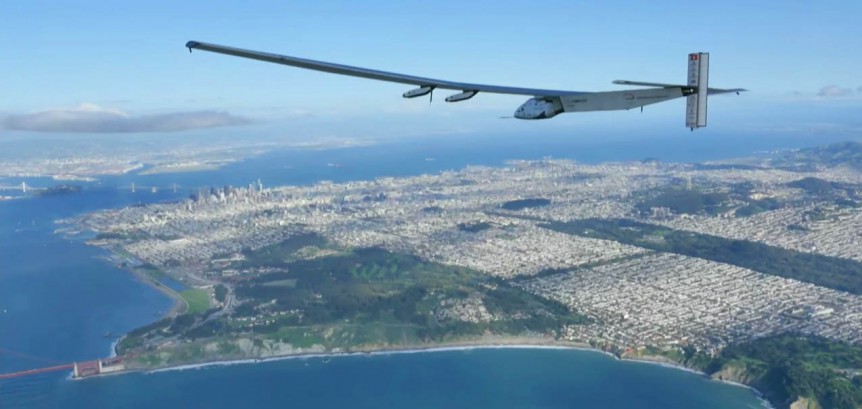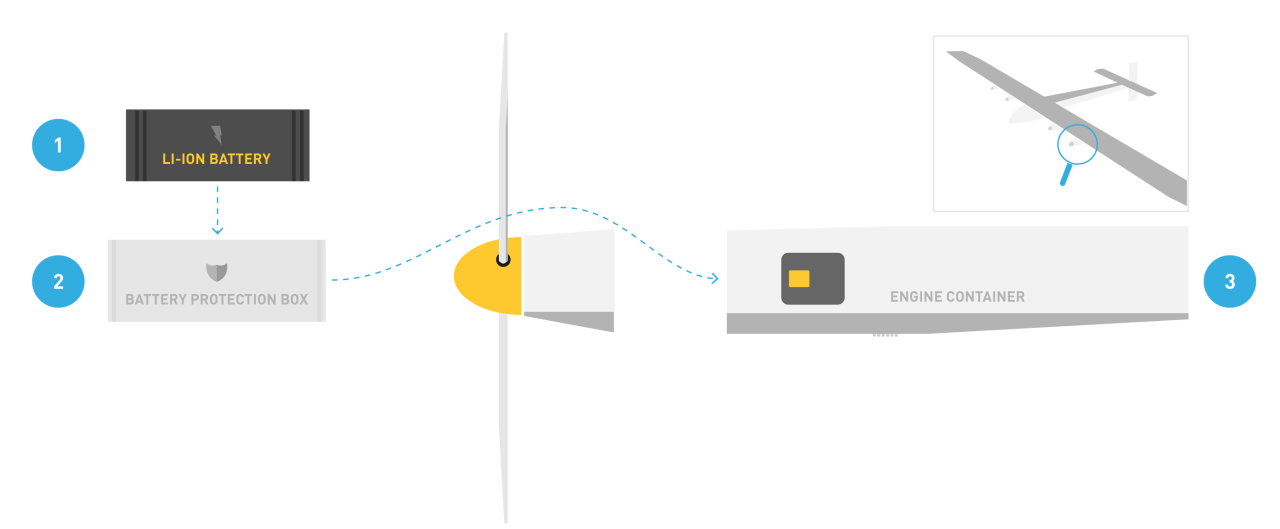At 11:44 PDT, April 22, Solar Impulse 2, expertly piloted by Bertrand Piccard through tricky winds above Moffett Airfield, made its second landing in the United State, almost three years after Solar Impulse 1 had left on its flight eastward* and just in time to close out Earth Day. HB-SIA (Solar Impulse 1) made its trip across America in six hops, none lasting more than 21 hours and 22 minutes. HB-SIB (Solar Impulse 2) flew six hops between Abu Dhabi and Nanjing, China emulating the stages of the American crossing in distance and duration. Things reached record-setting levels after that. The 44-hour trip from Nanjing to Nagoya, Japan gave pilot Andre’ Borschberg a real workout, followed by his record-setting 117-hour epic voyage from Nagoya to Kalaeloa, Hawaii. Fellow pilot Bertrand Piccard finished the trans-pacific flights with a 62-hour flight to San Francisco. The pilots could not do this without a large ground crew, seemingly perpetually busy with preparations, maintenance, and …
Solar Impulse Down, But Not Out
Following its cliff-hangar five-day flight from Nagoya, Japan to Kalaeloa Airport, Hawaii, Solar Impulse is undergoing an extended period of tender loving care, dedicated rebuilding of its battery packs and insightful reflection on how to avoid future issues. Landing July 3, 2015, Pilot André Borschberg broke the world records for distance along a course (6,825.4 kilometers – 4,231.5 miles), Straight distance, and Duration for solar aviation, as well as the world record for the longest solo flight ever (80 hours and 5,663 km. – 3,511 miles), according to the Solar Impulse web site. If all had gone according to plan, Bertrand Piccard would have hopped on board a few days later and headed for the United States on the second leg of the trans-pacific part of the the team’s around-the-world voyage. Unfortunately, the rigors of a test flight over Nagoya, followed by a climb to 28,000 feet too soon after that test flight, seems to have doomed at least some of the batteries. …
There’s an Airplane in There Somewhere
Looking like an igloo condominium, Solar Impulse’s inflatable hangar was hastily shipped to Nagoya Airport in Japan to protect the large, but vulnerable, machine from weather damage. Before the temporary hangar could be installed, though, high winds caused part of the structure holding a cover over the right wing to hit the aileron and cause minor damage. Solar Impulse reports, “In the early hours of Tuesday 2 June as we were in the process of offloading the material and beginning to prepare the mount the mobile hangar, there were wind gusts which led to damage to SIB, on a small part of the wing. We do not see this as being a major issue, but we do not have a full evaluation of the time necessary to repair. We hope that it will not exceed at least one week and will know more in the next days…” With HB-SIB sheltered safely for now planners scan the weather ahead for the final push to Hawaii. This diversion prevents …
Solar Impulse: Bad News, Good News
The Solar Impulse team had bad news today. “Unfortunately the current weather window to reach Hawaii has closed. The cold front is too dangerous to cross, so we have decided to land in Nagoya Airfield, also known as Komaki Airport, and wait for better weather conditions in order to continue.” The good news came with the safe landing following a record 40 hours in the air for Andre’ Borschberg, who had ample opportunity to practice the self-hypnosis and meditation skills that help keep him sharp. That the full flight would have added at least 80 hours to the endeavor seems less daunting now, since the Solar Impulse team handled the diversion to Nagoya calmly and professionally, even obtaining the services of a bicycle rider to assist with one outrigger landing gear during the landing. The unscheduled landing also means bringing the craft’s giant inflatable hangar on an unscheduled trip to Japan. This longest flight so far gave ample opportunity for the team to demonstrate the …


